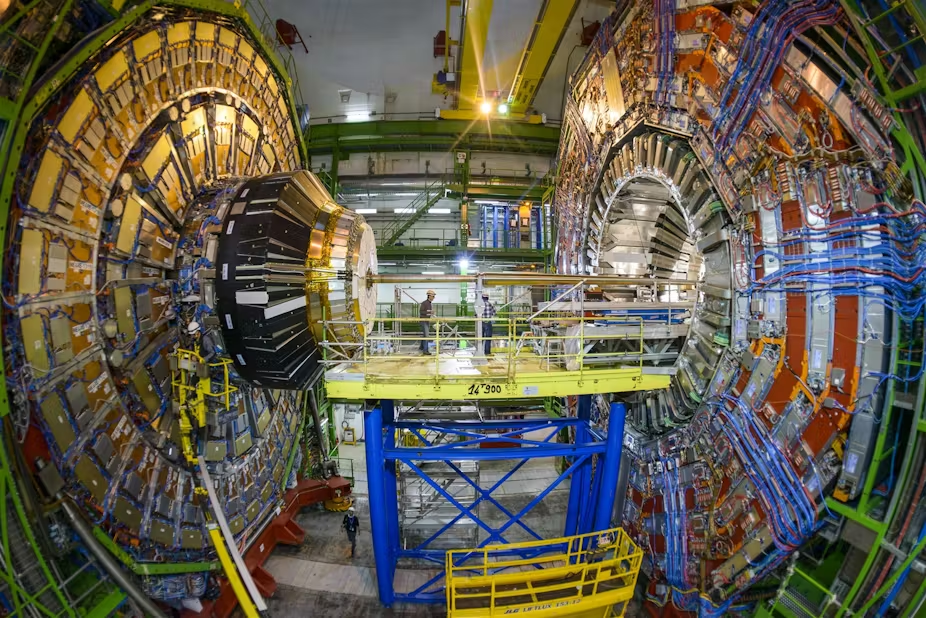Mumbai/New Delhi: India is celebrating a major milestone in global science collaboration following the announcement that CERN’s four flagship Large Hadron Collider (LHC) experiments—ATLAS, CMS, ALICE, and LHCb—have jointly won the 2025 Breakthrough Prize in Fundamental Physics. This prestigious $3 million award honors the researchers behind groundbreaking publications using LHC Run-2 data (2015 to mid-2024), which deepened our understanding of the universe’s fundamental building blocks.
A total of 13,508 scientists and engineers across the four experiments contributed to the discoveries. The prize funds will support doctoral students from participating institutes, offering them research opportunities at CERN.
India’s Crucial Role in Global Discovery
Indian researchers have played an instrumental role in the ALICE (A Large Ion Collider Experiment) and CMS (Compact Muon Solenoid) projects, with multiple institutions contributing to detector design, data analysis, and infrastructure. From the Tata Institute of Fundamental Research (TIFR) to the Institute of Physics and several IITs and universities across India, Indian contributions have spanned decades and disciplines—from hardware to computing and physics analysis.
“These contributions underscore India’s long-standing commitment to cutting-edge global science,” said Dr. A.K. Mohanty, Chairman of the Atomic Energy Commission.
India’s involvement with CERN dates back to the 1960s and has deepened over time through formal agreements with CERN, including India becoming an Associate Member State in 2017. Indian scientists now hold key positions on CERN’s Research and Resources Board (RRB), Scientific Council, and other decision-making bodies.
Notable Indian Contributions
-
ALICE Experiment: Indian institutions including VECC Kolkata, SINP, IOP-Bhubaneswar, and IIT Mumbai contributed to designing the Photon Multiplicity Detector (PMD) and Muon Spectrometer, critical for studying quark-gluon plasma. Indian teams also led pioneering analyses on event-by-event fluctuations, resonance production, and collective flow.
-
CMS Experiment: Indian researchers developed essential components like Resistive Plate Chambers (RPCs), the Silicon Preshower Detector, and Hadron Outer (HO) Calorimeter. They played key roles in searches for the Higgs boson, supersymmetry, and physics beyond the Standard Model (BSM).
-
Infrastructure and Engineering: Teams from BARC-Mumbai and RRCAT-Indore contributed precision-engineered systems for cryogenics, superconducting magnets, RF systems, and beam instrumentation—integral to the collider’s performance.
-
Computing Power: Indian Tier-2 centers like TIFR and VECC have been central to the Worldwide LHC Computing Grid (WLCG), offering 17,400 computing cores and 12 petabytes of storage. India supported over 17.5 million ALICE jobs in 15 years, with additional software development efforts including GRIDVIEW and SHIVA tools.

A Legacy of Learning and Innovation
More than 110 Ph.D. theses and 130 peer-reviewed publications have emerged from Indian contributions to LHC experiments during Run-2 alone. Students trained under these collaborations gain expertise in advanced instrumentation, computing, and international science diplomacy—skills crucial for India’s growing role in frontier research.
“Indian researchers have made profound contributions to LHC experiments,” said Prof. Abhay Karandikar, Secretary, Department of Science and Technology. “This global recognition highlights our commitment to fundamental science.”
Looking Ahead: India’s Future at the LHC
India is now preparing for the next generation of upgrades at the LHC. Indian teams are:
-
Contributing to the FoCal detector in ALICE for precision studies of direct photons.
-
Leading efforts in the CMS Phase-2 upgrades—developing the Outer Tracker (OT), Gas Electron Multiplier (GEM), High Granularity Calorimeter (HGCAL), and enhanced Trigger systems for the High-Luminosity LHC (HL-LHC) era.
These upgrades are crucial for achieving precision physics goals and exploring unanswered questions beyond the Standard Model.
Science Meets Culture: The Nataraja Connection
India’s cultural contribution to CERN is symbolized by the iconic Shiva Nataraja statue installed at the CERN campus in 2004—a metaphor for the cosmic dance of particles. The statue stands as a tribute to India’s deep-rooted blend of spirituality, mythology, and modern science.
As the LHC experiments push into new territory, India remains a committed partner—fueling discoveries that could reshape our understanding of the universe.






